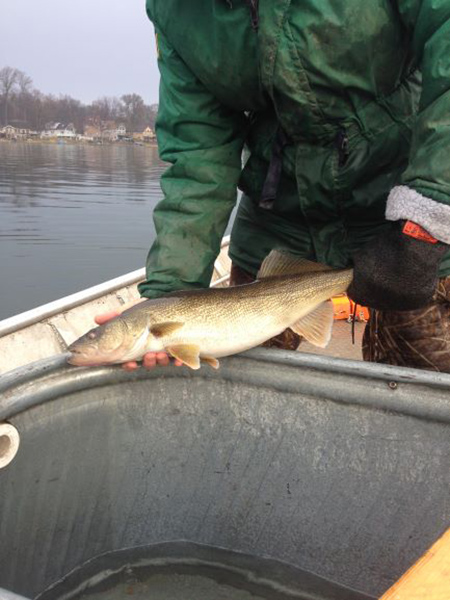By Louie Stout
 Magician Lake Proposals on Public Meeting Agenda; Report on Magician Walleyes
Magician Lake Proposals on Public Meeting Agenda; Report on Magician Walleyes
Got a question, suggestion or complaint you’d like to share with Southwest Michigan fish managers?
You’ll get that opportunity April 8 at the Wolf Lake State Fish Hatchery. The hatchery is at 34270 County Lane Road, Mattawan, Mich. 49071, located about an hour north of Edwardsburg.
The session runs from 6 p.m.-8 p.m.
The informal gathering is part of the DNR’s “Coffee and Conversations” with state officials.
Not only will biologists be on hand to discuss any issues that concern you, but they will also outline regulation proposals and stocking changes they are considering for southwest Michigan. They’ll be discussing inland lake fisheries as well as Lake Michigan issues.
One of the proposals on the agenda involves Magician Lake, located north of Dowagiac. It’s a popular fishery among Michigan and Indiana anglers.
A February, 2017 DNR survey there revealed a lot of slow growing northern pike and not many big ones.
“We have received a lot of complaints over the last decade that it’s hard to catch legal pike there,” said Southern Lake Michigan Unit Manager Brian Gunderman. “Our survey showed growth rates were slow compared to statewide averages and well below what we see on lakes in the immediate area.”
Therefore, the DNR is proposing a pike slot limit at Magician. With angler support, the Fisheries Division will propose a change from the current 24-inch minimum size limit to a 24-to-34 protected slot limit. In other words, you would be able to keep pike less than 24 inches or those over 34 inches. The daily bag limit would still be two fish.
Biologists hope that will give the slower growing pike better chances to reaching trophy size and encourage anglers to remove some of the smaller pike.
The proposal likely will go before the Natural Resources Commission later this year and, if approved, implemented in April, 2020.
A look at walleyes
Gunderman said pike was the primary focus of the survey although they also looked at walleye populations as well.
The number of walleyes they encountered was low compared to previous surveys but the overall grow rate was better than the statewide average.
DNR nets turned up 106 walleyes measuring between 14 and 27 inches from five year classes. Remarkably, 85 percent of the walleyes were 20 inches or longer. In addition, they were reaching legal size (15 inches) by age two when the state average for walleyes attaining 15 inches is age 3.
A number of fish they captured were 10 years old or older, an indication that there are quite a few big walleyes in Magician that aren’t getting caught by anglers.
We found it peculiar that the survey showed that pike in the lake aren’t growing as fast as walleyes.
Why is that?
Gunderman said that the walleyes tend to feed on the abundant bluegill more than the pike do.
“Walleyes are more willing to take something with ‘spines’ (like a bluegill) than pike,” he said. “Pike prefer perch and other soft spine fish. Bluegills are down the list of the pike’s preferred food source.”
Because of the low numbers of younger walleyes, Gunderman said stocking adjustments are in the plans. Instead of stocking 50 per acre of the 2- inch-or-less walleyes every other spring, Magician will be switched this year to four per acre of fingerlings that measure 5 to 8 inches and are stocked in the fall.
“We’ve switched the majority of our walleye lakes to fall fingerlings and have seen better survival,” he explained. “When the stocked walleyes are in that larger size range, they are no longer panfish food and more survived.”


